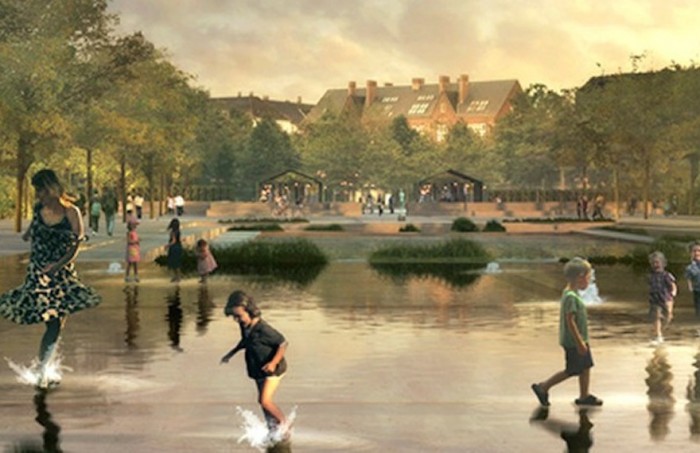
Rising sea levels are causing serious problems for coastal countries across the globe, especially the Northern European countries that are positioned near to melting polar ice caps. According to a study by The Niels Bohr Institute, the sea level around Copenhagen is expected to rise by as much as 1.6 metres in the next century. In response to the problem, the city has come up with various ways to adapt to increased flooding.
The city has ramped up climate adaptation plan since 2011 when it was hit by a cloudburst that flooded the streets, cellars and main roads in less than six hours. In preparation for the impact of global warming, a consulting group made up of the organisations COWI, TREDJE NATUR and Platant have proposed ways in which the city can be transformed to accommodate large amounts of water without giving up its precious public spaces.
Because the city’s sewage system is unable to withstand extreme rainfall or flooding, the consulting group is submitting plans to alter existing architecture and infrastructure so that they can double as water catchment spaces. A plan was created for Enghaveparken that suggests surrounding the park with a sloped wall to collect rainwater from the area and surrounding rooftops.
The city plans to create a water management plan for each district by rethinking usages of public spaces. This means that an outdoor amphitheatre could function as a performance space as well as a basin to help regulate water levels in the event of flooding.






